Viller-Kotre. Part of 4
At this time the command 241-th Infantry Division strengthened the weak garrison positions at Vobyuena - were nominated 3 consolidated companies of oboznikov (each a force of about 40 bayonets), the remains of 2-th and 3-Battalions 24-th infantry regiment, strike team (120 bayonets) and training machine-gun team (160 bayonets and 6 machine guns) divisions, as well as 373-I engineer company.
Separate groups of fighters from the remnants of the Bavarian 22 Infantry and 13 Sub Reserve Infantry Regiments also gathered at the position of Wobyuin, and both sapper companies of the 11 Bavarian Infantry Division went to the rear.
By order of the commander of the operational group (corps), all the units in position had to obey the commander of the 34 infantry division, but due to the prevailing situation, the commanders of the 241 and 11 th Bavarian divisions or the commanders of their brigades had to give orders to their units, who fought in this position. Therefore, the command of the group (corps) considered it necessary to retain the command of the divisional divisions in the lanes of their divisions. Of the combatant units, only the 34 th infantry regiment and the mortar company of the division remained at the disposal of the commander of the 67 th infantry division.
When the Sakonen position was lost and the French reached the back of the ridge, the 472 and 473 regiments were in danger of tripartite coverage and destruction. There was no question of a counterattack from the position of Wobuein - there was not enough power for that. Therefore, General Fortmüller decided, before it was too late, to take both regiments to the line of Pomieux, Mersen-et-Vaud.
The commander of the 53 reserve division was asked for strong fire in height between Anblene and Pernant ravine, as well as in the Le Moignille farm area, to make it easier for the 472 and 473 regiments to detach from the enemy.
Small rear guards with automatic rifles covered the waste. Mortars were destroyed, machine guns were removed, and two guns of the 2 th battery of the 48 th artillery regiment used as anti-tank guns were put out of action. The fire screen to cover the retreating infantry was skillfully and successfully carried out with batteries of the 53 th reserve and 14 th infantry divisions, as well as the 3 th battery of the 48 th artillery regiment.
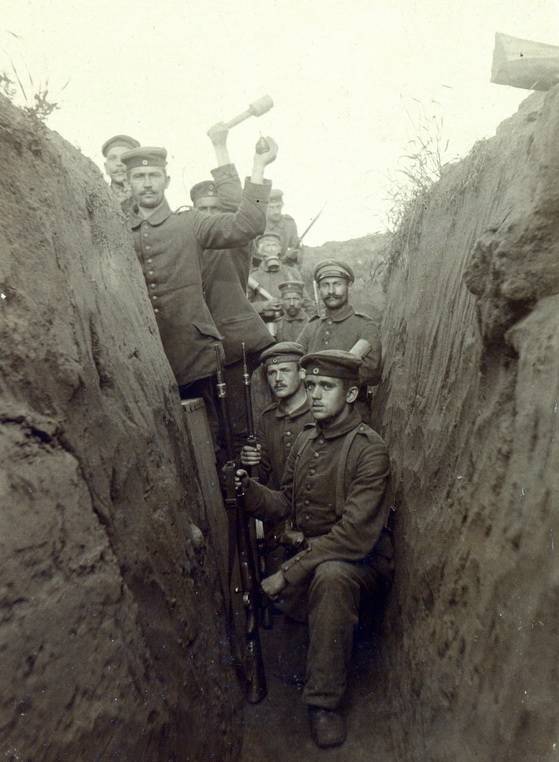
Taking the Sakonen position, the French on the front of the 241 Infantry Division attacked indecisively and uncertainly. They reached the eastern slope of the ravine, but did not launch the attack position at Wobyuen.
On the front of the 11th Bavarian Infantry Division, the French significantly increased: one could see how numerous Tanks they moved to the Sakonen ravine, to the west of the ravine the artillery occupied positions south of Saint-Aman, and cavalry was seen in the Sakonen ravine.
Fights in the group Vatter continued until the evening. The last attack on this site was undertaken by the French between the 19 and 20 watches - and repulsed by the Germans.
The command of the group (corps) ordered to hold the Mersen-e-Vo line, the height to the east of Shoden (i.e., Vaubyen’s position) and to hastily equip rear positions on the lines: Oli, Soissons' western outskirts, Bele, Noyon, as well as the r. En
In accordance with the order of the army commander, between the corps of War and Staabs, a group was formed led by the command of the 38-th reserve corps, which was to take over the 53-th reserve, 14-th and 211-th infantry divisions and all troops in the bands of these divisions.
On the first day of the French offensive, artillery fire was opened immediately on the entire front of the Vatter group - in 5 hours 30 minutes. The fire was directed mainly at advanced rifle positions and infantry concentration areas, batteries, rear areas and communications. Some sections of positions, command and observation posts were heavily smoked. Here, the French completely abandoned the systematic suppression of German artillery before the beginning of the infantry attack, but in some areas (for example, in the 14-th reserve division) they opened fire during the attack. Very soon, all lines of communication were interrupted; telephone and light-signal communication completely stopped; radio and telegraph worked only in some places and with interruptions.
In the strip of the 42 Infantry Division immediately after the discovery of fire by French artillery began the German artillery counterpreparation — fired at a missile signal into a barrage. The French infantry attack was accompanied by a large number of tanks. On the right flank, the battalions of the first and second lines of the 131 Infantry Regiment were almost completely destroyed, and their remnants held out for some time in an artillery cover position. The reserve battalion about 8 hours 20 minutes west of the position at Misi stumbled upon the advancing, which Misi already occupied. The battalion could not go on the counter - and had to restrict itself to an attempt to detain the French.
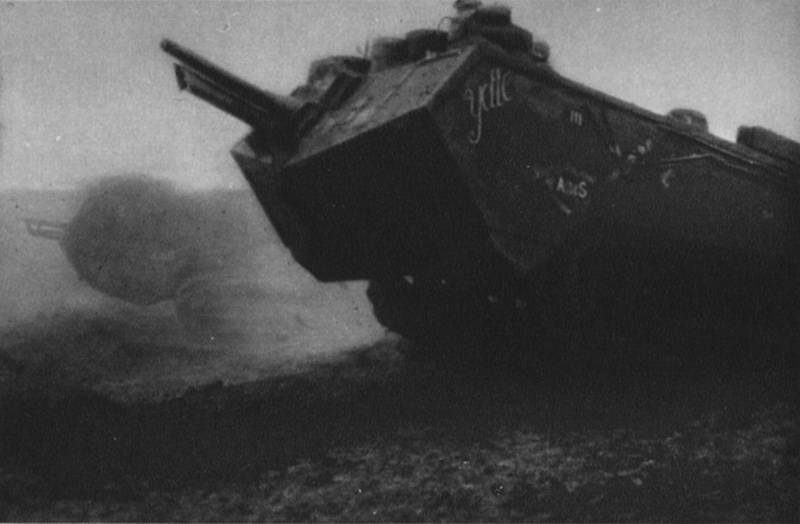
The latter broke into the bands of the 11 th Bavarian and 14 th reserve divisions, and then, turning from the north against the 131 th infantry regiment, and from the south against the 138 th infantry regiment, swept and crushed the flanks of the 42 th infantry division.
A fierce struggle was fought on the 17 regiment, but by the 6 watch 40 minutes, four battalion companies of the first line and two forward companies of the second line battalion were destroyed. The reserve battalion was late, and the German counter-attack was foiled.
The 138 Infantry Regiment was also vigorously defending. Around 5 hours 55 minutes, the French broke into the main resistance line, but after a few minutes, the second mouth of the second-line battalion counterattack began.
Artillery 42-th division for some time firing barrage. When the tanks and infantry chains of the attackers approached some batteries, the latter courageously and in most cases fought off very successfully. The guns rolled out of the gun trenches and hit tanks and infantry with direct fire. But the tanks were poorly visible among the high vegetation, and in most cases had time to come close to the batteries - before they opened fire.
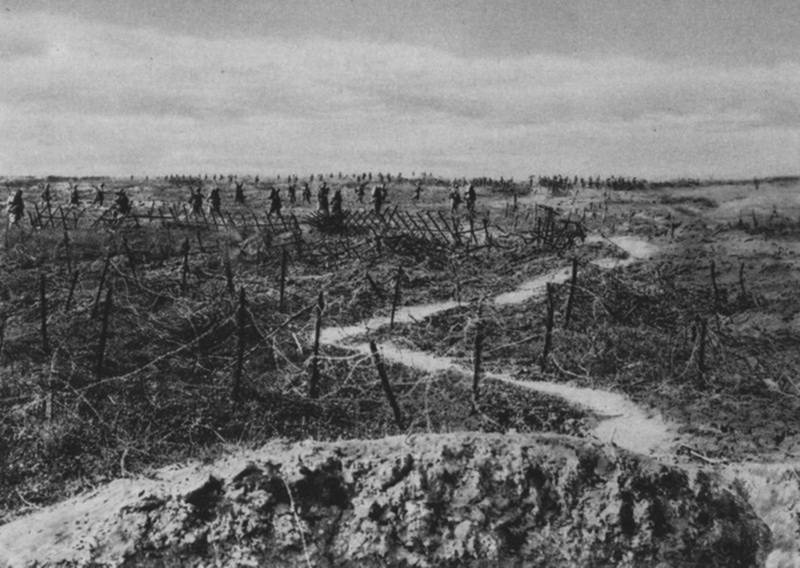
Nevertheless, the batteries were captured by the French, and only a few gun crews succeeded in putting the guns into disrepair to go to the rear. In 8 hours 30 minutes all artillery, located to the west of the position at Misi and Shoden, was lost.
In this position, in the 42 Infantry Division, the French were given the first planned and strong resistance. Up to 9 hours, 15 minutes managed to repel several attacks, supported by strong artillery and a large number of tanks. In 8 hours 30 minutes, the command of the group of Watters transferred the 42 th division of the 109 Infantry Division to the 28 division of the XNUMX division of the Life-Grenadiers.
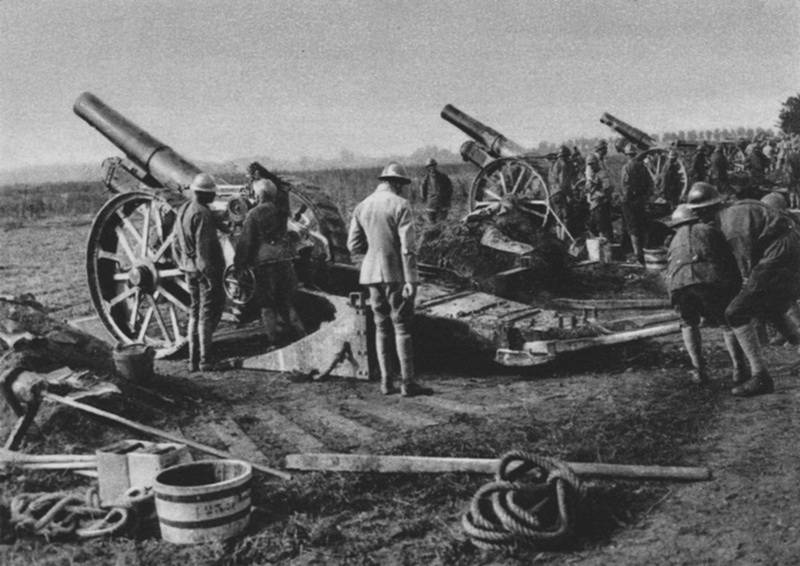
In the band of the 14 reserve division, the attackers followed three chains at distances in 80 m behind the firing shaft. The attack through the farm Werth Fey was supported by tanks. The Americans attacked here, while the French, reinforced by the Senegalese battalions, attacked in the center and on the left flank of the division. The fight against the German troops, occupying positions in the valley. Savyer, was carried out mainly with the help of artillery fire. Therefore, the battalions of the 159 Infantry Regiment, which defended there, held out for a relatively long time - and this sector was captured by the Allies later and by means of coverage.
German barrage fire was opened in 5 hours 34 minutes.
The 219 Infantry Regiment, located on the right flank of the division, had a strong resistance. Here, the battalion companies of the second line, reinforced by part of the reserve battalion, went on the counterattack. The fire of the German machine guns inflicted heavy losses on the attacker.
In the area of the 218 th Reserve Infantry Regiment, the attack developed unexpectedly quickly and led to a complete breakthrough of the German defense. Both the first-line battalion and both second-line battalions were overturned by the first onslaught. The regimental reserve battalion counterattack pushed the attackers, and then repulsed seven or eight attacks. But in the afternoons the stubbornly holding companies were forced to lay down weapon.
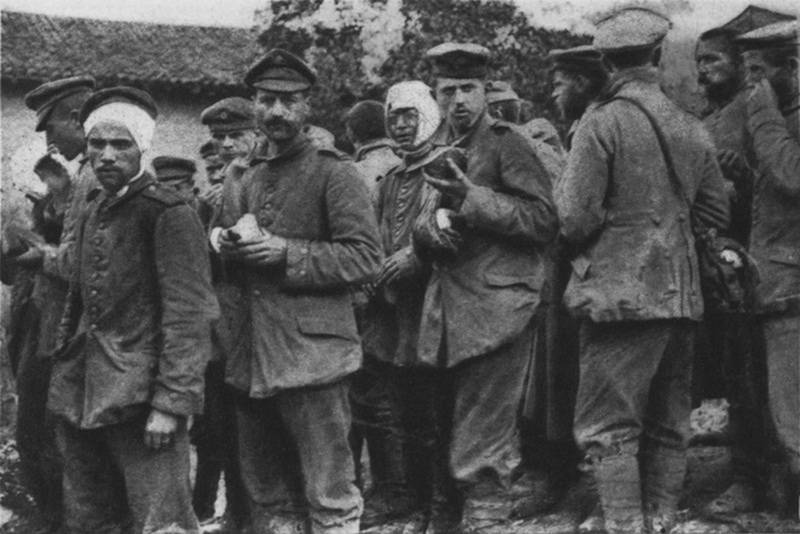
159 th Infantry Regiment, defending the valley of the river. Savyer was not immediately attacked from the front - but soon his two battalions, located in the first line, had to fight off attacks from the right and left. Much of it was almost completely destroyed.
In the area of the left-flank regiment - the 53 of the reserve infantry - the Allied offensive also proceeded at a fast pace. Already in 6 hours, the Germans lost the first line - from the first-line battalion only 1 to an officer, 4 non-commissioned officers and 6 private soldiers, some of whom were seriously injured, managed to escape to the site of a neighboring regiment. The counterattack, undertaken by the battalion of the second line, failed - the whole area was under very strong artillery fire. Then the battalion for some time led the battle to the west of the position at Vierzi. But in the end, and this battalion was destroyed - the remnants moved to the position of Vierzi.
The artillery of the 14-th Reserve Division, which was to the west of the position at Vierzi, continued to carry out "close fire barriers" - until new targets were opened to it, which it began to hit with direct fire. All batteries were soon bypassed and, having suffered great losses, were forced to surrender their positions. As the Allies advanced very quickly, not a single battery could move to a new firing position in the rear. Up until their demise, the batteries acted vigorously, firing almost 1000 shells.
Thus, in the band of the 14-th Reserve Division, almost all of the space to the west of Vierzi’s position was lost. Now, the remains of the first and second line battalions left for Vierzi’s position, and the reserve battalions of the 219 and 218 and reserve and 159 infantry regiments were already located there. At the position itself, Vierzi had a standing garrison consisting of the 3 and 4 mouth of the Geldern landsturm and parts of the 41 separate machine-gun battalion. To enhance this garrison, the sapper companies of the 14 and 47 reserve divisions arrived.
In the 115 Infantry Division, the attack began later, at 6 hours. The first attack was repelled everywhere, with the exception of the Korean road, Loire, where the Allies managed to penetrate into the location of the right-flank battalion of the 40-th reserve infantry regiment. But the regiment, reinforced by the first battalion of the 171 Infantry Regiment, managed to fight off. In these battles, 25 of the French from the 42, 167, 2, combined regiments and 75 of the Senegalese infantry battalion were captured.
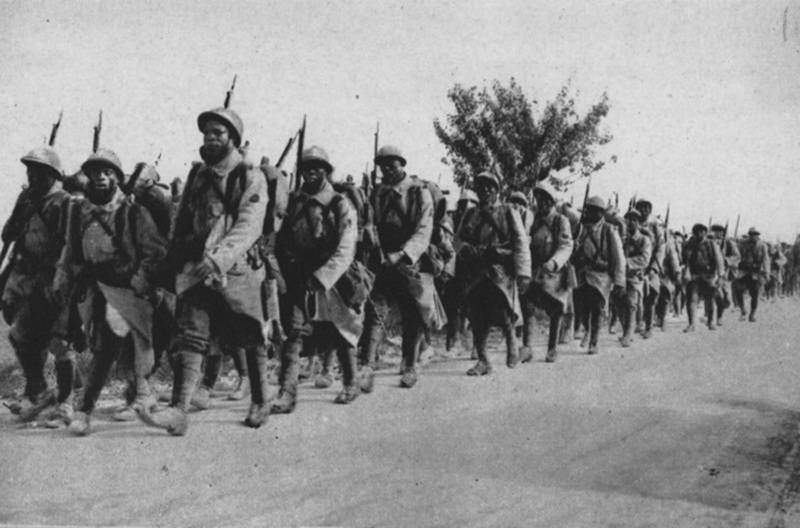
But the breakthrough of the French in the bands of the neighboring divisions made itself felt very soon. By 7 hours, most of the battalions of the first and second lines of the 34 th fusilier were full, fighting on the right flank, and the 229 th engineer company, located in the position of artillery cover to the west of Willer-Elon, was swept from the north and destroyed. A large part of the 3 battalion of the 34 regiment, which was gradually surrounded, lasted until the evening. The remnants of this battalion, together with the 1 battalion of the 34 regiment, battled for a while around Willer-Elon and in the village itself, and then retreated to the position of Moloy. Some units of the 1 battalion of the 34 regiment held out on the Montranbef farm until July 20. An artillery group of three light field and two howitzer batteries located in this area was captured by the French after a fierce hand-to-hand combat.
At the same time, the threat was growing from the south. There, in the band of the neighboring division, the French seized Ansienville and, around 7 hours, attacked the left flank of the 115 Infantry Division with strong strike forces. Owing to the smoke of the valley north of Ancienville, German companies engaged in repelling frontal attacks did not notice the bypass movement that threatened their left flank, and both left-flank companies of the 171 Infantry Regiment were swept from the rear and destroyed after a long battle.
At the same time, the French carried out an attack from the farm of Lionville in a northerly direction - briefly bursting into the firing position of the 6-th battery of the 28-th field artillery regiment. At about 9 hours, after the introduction of the last reserves of the 171 Infantry Regiment, the front stabilized here.
There was some lull before the 9 watch on the right flank of the 115 Infantry Division.
At that time it still seemed possible to delay the Allied offensive in the positions of Shoden, Vierzi, Molua. About 8 hours 30 minutes was given the appropriate order of the commander of the corps.
By 9 watches 30 minutes, the allies succeeded by embracing and striking the flank, with the massive use of tanks, to capture the Shoden position. While on the right flank of the division, the 131 Infantry Regiment still held the position with Misi, the 18 and 138 regiments had to withdraw to the line stretching from this height to the western edge of the Chazel Gulch. Of the two approached battalions of the 109 Grenadier Regiment, the 1 was placed between the 131 and 17 regiments, and the 2 was placed south of the 138 infantry regiment.
The French tried to advance eastwards from Shoden, with the infantry again being supported by a large number of tanks. But the attack was repelled - above all by the battery of the 14 th field artillery regiment attached to the 109 grenadier regiment as a tracking battery.
In the meantime, units of the 131 regiment of the 146 infantry division operating in the Staabs group (corps) were in the area of the 34 Infantry Regiment. Since the commander of the 131 regiment and the commander of the 17 infantry regiment were killed, in order to better organize the management of the infantry in the 42 infantry division, it was redistributed to three areas: the "northern", "central" and "southern".
At the position of Vierzy, the 16-th Reserve Regiment managed to turn around on the northern border of the hollow east of Vierzy to the south-west, as the allies, with the support of tanks, launched an offensive. Before the right flank of the battalion, the Americans were seen, and before the left - the French.
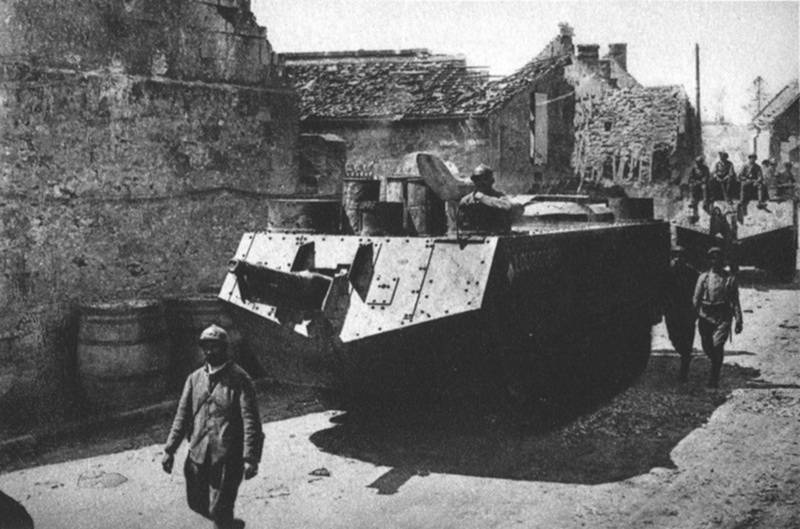
The 40 fusilier regiment also took part in the battle. Despite the strongest artillery fire, the regiment managed to reach the heights to the west of the Chazelle line, Leshel, at the last minute, before the Allies managed to occupy them. The escort battery (3-I battery of the 14 th artillery regiment) took an active part in the defense.
The allies, who suffered great losses, began to dig in.
In repulsing the attacks, both anti-tank platoons of the 2 th battery of the 14 th reserve field artillery regiment took part with great success - separate tanks that broke through the Shoden and Droisey highways and advanced into the Shazelskaya valley were partially shot, partially forced to turn back.
The Germans began to put their parts in order. The village of Vierzi was mainly still in German hands; the railway station was defended by the machine-gun nest of the 41-th separate machine-gun battalion.
In 8 hours, an allied attack began south of Vierzi - across the lowland of the r. Saver. Despite the fierce resistance of the garrison, which consisted of units of the 159 Infantry and 53 Sub Reserve Infantry Regiments (because of the high loaves, the arrows shot from the hand while standing), the Allies managed to advance.
The 14-I reserve division divided its front into two brigade sections: the northern section received the 27-I reserve infantry brigade, which was transferred from the 47-th reserve division to the 14-reserve division; 94-I reserve infantry brigade was assigned to the southern sector. The 2 th battalion of the 40 regiment and a group from the mortar company of the division and fighters who strayed from their units entered the division reserve.
To be continued
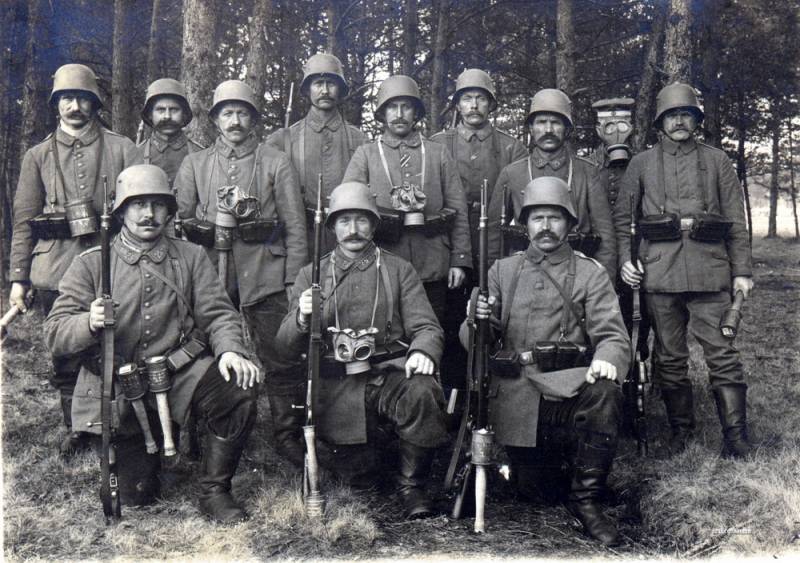
Information